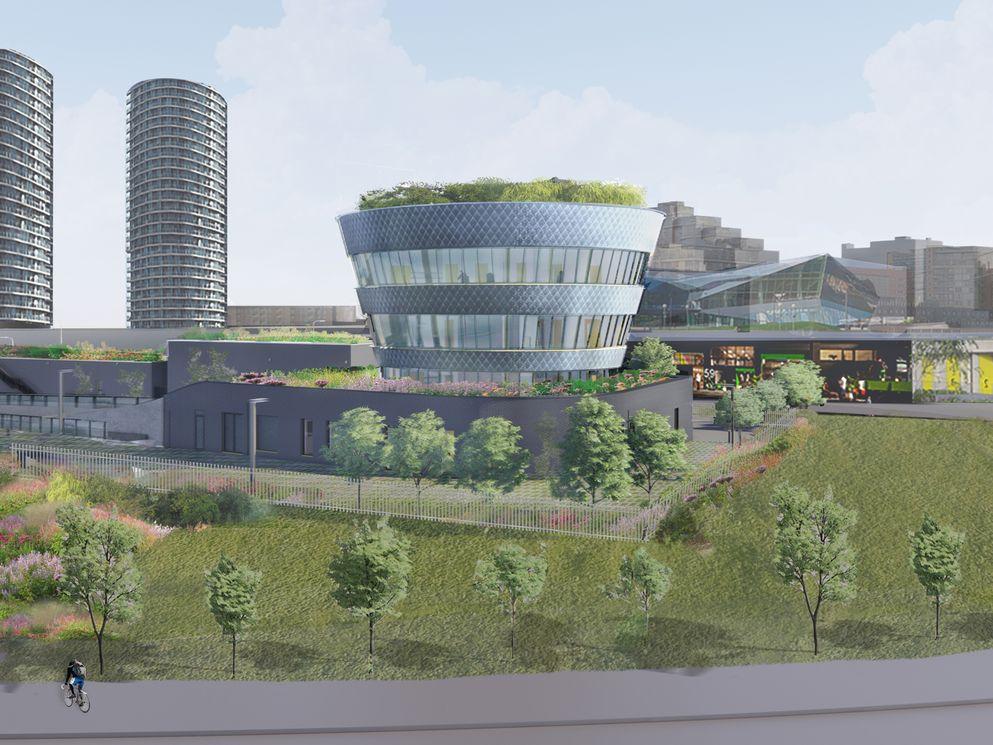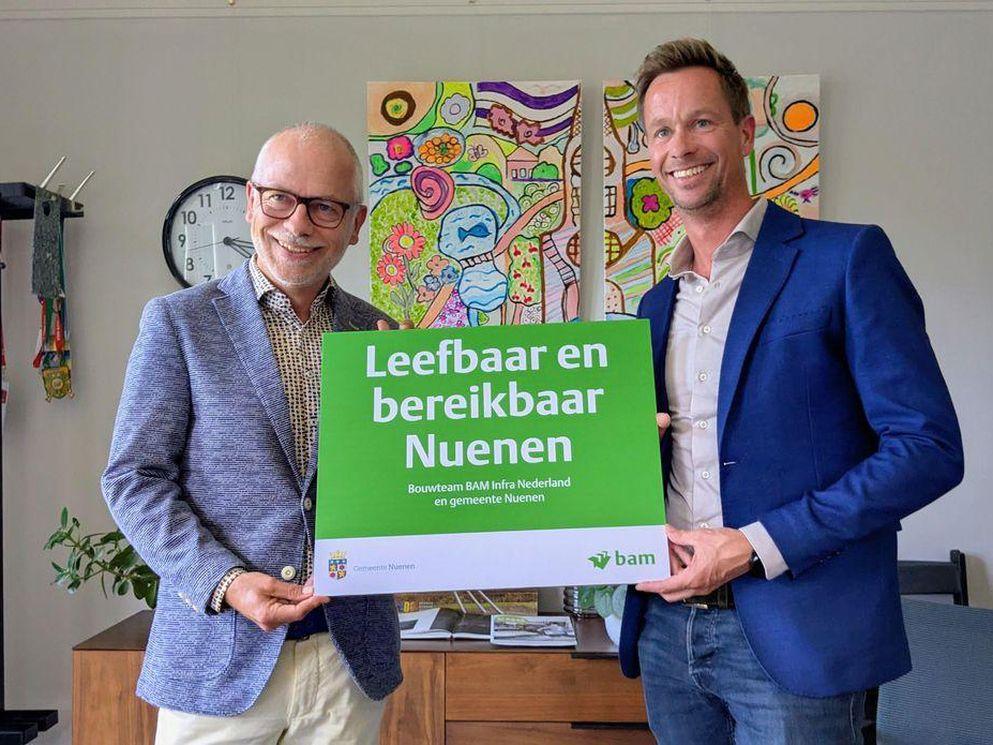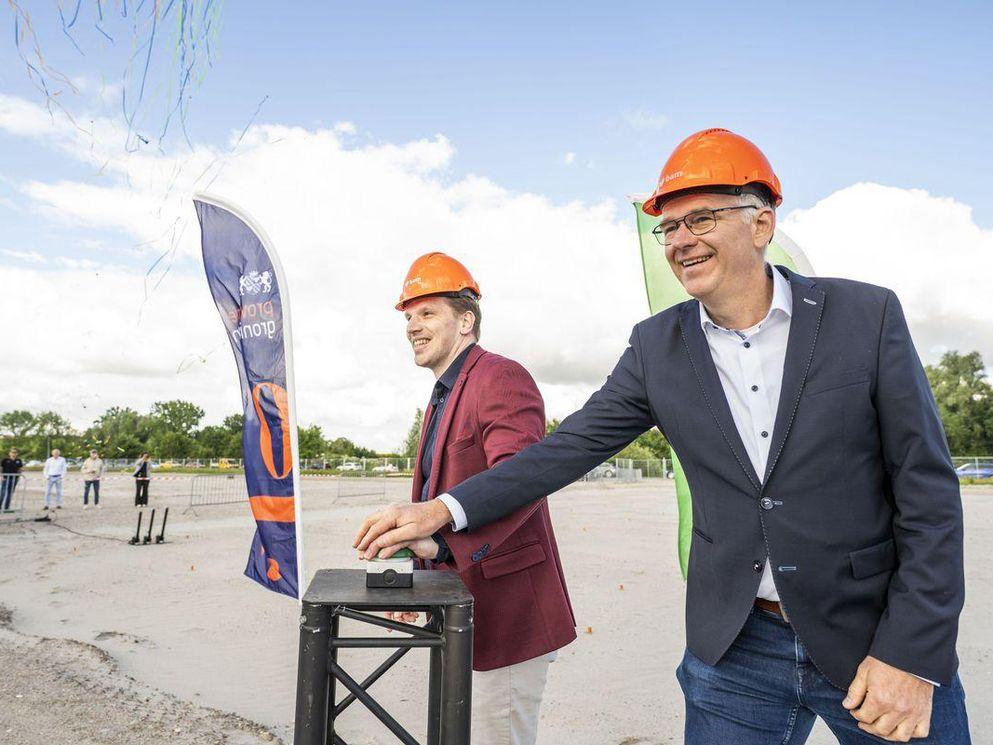Silvertown Tunnel virtual exhibition launches

(Press release Transport for London:) London, 19 August 2021 - A new virtual public exhibition about the Silvertown Tunnel project has launched today on the Riverlinx website.
- New CGI image shows what the fully accessible walking and cycling bridge over the Blackwall Tunnel Approach Road will look like once complete, improving links to North Greenwich
- Nearly 600,000 tonnes of material will be excavated and removed from the site by river to help minimise traffic and construction emissions
It includes new CGI images showing what the fully accessible walking and cycling bridge across the A102 Blackwall Tunnel Approach Road will look like once complete. The new bridge has been designed to provide a safe and easily-accessible crossing for those walking and cycling through the local area and incorporate future neighbouring development proposals. Subject to approvals, work on the bridge will begin next year, replacing the existing footbridge which was built in the 1960s.
Construction on the Silvertown Tunnel is now well underway, with piling work on the complex launch and retrieval chambers almost complete.
Nearly 600,000 tonnes of material will be excavated and removed from the site by barges along the Thames as part of the project’s wider commitment to keep construction traffic and emissions to a minimum. Up until mid-2021 40,000 tonnes of soil had already been removed from site via barges - removing more than 2,300 lorry trips from the road.
Helen Wright, Head of the Silvertown Tunnel programme at Transport for London (TfL), said: ‘Construction on the Silvertown Tunnel is now well underway. We are committed to a wide range of local improvements, including walking, cycling, and urban realm improvements, as well as wider environmental improvements as a result of this project. We are also delivering a comprehensive programme of monitoring for traffic, air quality and other factors, both during construction and when the tunnel is open, to ensure we deliver on our promises that overall traffic volumes do not increase and there is an improvement in air quality once the tunnel opens.’
Juan Jose Bregel, Riverlinx Project Director, said: ‘My team and I are committed to delivering this project responsibly, and with integrity. Riverlinx will keep the communities where we operate informed, involved and fully aware of current and future opportunities and activities. We hope you enjoy exploring the information explaining the design and engineering behind this impressive tunnelling scheme; innovative solutions for challenges and complexities faced working under the Thames and in a busy urban environment; and details of how we are delivering the project safely and sustainably.’
To access the virtual exhibition visit www.riverlinx.co.uk
For more information about the Silvertown Tunnel visit www.tfl.gov.uk/silvertown-tunnel
Notes to editors
The Silvertown Tunnel will provide a public transport-focused river crossing with improved bus links across the Thames, with both the tunnel and the surrounding area falling within the expanded Ultra Low Emission Zone from 26 October 2021. By reducing congestion and creating a more reliable river crossing for cars, vans and lorries, it will support the wider economy of East and South East London by providing opportunities for both new jobs in the local area as well as support new housing and business developments across the wider area.
The Tunnel is being delivered by the Riverlinx consortium through a design, build, finance, operate and maintain contract, with the vast majority of the funding raised through private finance specifically for the scheme. The consortium is made up of Aberdeen Standard Investments, BAM PPP PGGM, Cintra, Macquarie Capital and SK Engineering & Construction. Once open, the scheme will also reduce congestion and improve the reliability and resilience of the Blackwall Tunnel, which will improve overall air quality in the local area – which is currently among the most toxic in London due to continued levels of tunnel congestion. TfL will also be enhancing river crossing facilities for cyclists and pedestrians across the local area as part of the scheme.
Once the tunnel is open, the total number of buses running through both Blackwall and Silvertown Tunnels will increase, with around 37 buses per hour over time as new developments, including at the Royal Docks and Greenwich Peninsula, are completed during the next decade. User charging at the Blackwall and Silvertown Tunnels alongside this new bus network will help to manage traffic levels and encourage people to switch their journeys to public transport where possible.
The scheme was subject to significant scrutiny as part of the planning process, including a six-month public inquiry, before it was awarded a Development Consent Order by the Secretary of State. Both TfL and Riverlinx are committed to ensuring that the commitments set out in the DCO will be delivered in full and work to refresh our assessment of traffic and air quality impacts is now underway and actively being discussed with the local authorities through the Silvertown Tunnel Implementation Group. The group informs TfL’s approach to planning and operating the Silvertown Tunnel and will be consulted on areas such as bus strategy, user-charging policy and other requirements of the Development Consent Order (DCO)
The construction costs for the Silvertown Tunnel remain at around £1bn. Riverlinx Ltd have secured £1.2bn in funding to cover risk and other expenditure to establish an organisation to oversee the project through construction and 25 years of operation. They also take a larger proportion of the risk associated with the project as a result. All payments towards the Silvertown Tunnel will be funded from a road user charge which will cover both the Blackwall and Silvertown Tunnel and will only begin once it is available for use, with payments linked to the performance of the contractor on key criteria such as availability. These charges will not only repay the construction costs, but will also cover the ongoing operational costs for the tunnel for 25 years as well as any maintenance and asset renewal required. Any surplus from user charging would be reinvested in the transport network.
Throughout the development of the Silvertown Tunnel, the project has been subject to a rigorous and transparent process to demonstrate it is the right solution and that its impacts have been properly assessed and mitigated. The construction project has also looked to further reduce its environmental impact with a dedicated access to mains electricity installed at the Silvertown site which has eliminated a number of generators from site and is also trialling hydrogen fuel powered tower lights, hybrid construction vehicles, and exploring the use of low carbon material options throughout the design of the scheme. TfL will also be carrying out improvements to the river walls close to the tunnelling route to ensure that they are not impacted in any way by the tunnelling.
Since December 2020, TfL has began a comprehensive programme of air quality monitoring in December 2020 to ensure the impacts of the Silvertown Tunnel are fully understood, and to support the delivery of the overall air quality improvement expected as a result of the scheme. 38 diffusion tubes and three continuous monitoring stations have been installed across five boroughs, which are recording nitrogen dioxide (NO2) levels.
Data collected from the continuous monitoring stations is now available on the London Air Quality Network (https://www.londonair.org.uk/) with data from the diffusion tube sites expected to be available from spring 2022. While TfL does not expect the scheme to impact on levels of Particulate Matter, in addition to the NO2 monitoring TfL has recently agreed to install a continuous PM2.5 monitor in Newham, which will complement existing local authority monitoring for PM2.5 in Greenwich and Tower Hamlets and support wider AQ initiatives across the capital.



